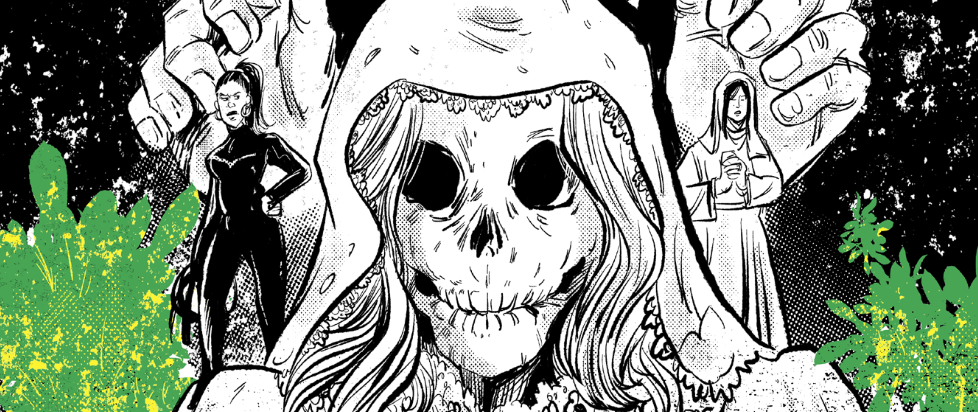
Challenge Cult Horror with Maximum Mystic Punks Vol 2: Crypt
This feature is a reprint from Unwinnable Monthly #167. If you like what you see, grab the magazine for less than ten dollars, or subscribe and get all future magazines for half price.
———
This series of articles is made possible through the generous sponsorship of Exalted Funeral. While Exalted Funeral puts us in touch with our subjects, they have no input or approval in the final story.

You’re supposed to be one of the Mystic Punks, aren’t you? Rebellious and anarchistic misfits with a penchant for the mystical, indomitable against authority both supernatural and mundane. You’ve duked it out with otherworldly goons at Star Valley High School. But as you descend deeper into an increasingly cult-infested mausoleum, you can’t help but feel trapped. Cornered. Is that bile rising up your throat? Maybe trying to loot for mystic and arcane secrets here wasn’t such a brilliant idea.
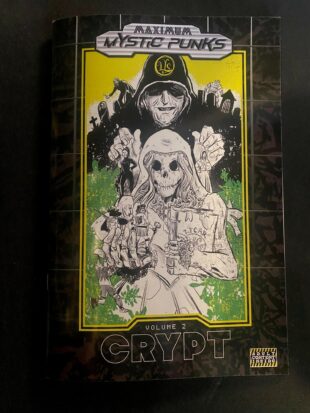
Or so it could possibly go in a game of Maximum Mystic Punks Vol 2: Crypt as run by a Dark Guide, or game master. As its title indicates, the game is part of the Mystic Punks series that was initially created as a solo RPG zine in 2016. It was first developed by Anthony Meloro, or Dark Guide Tony. While the first Mystic Punks multiplayer adventure, Vol 1: The Trial at Wenderd’s, took place in a fast-food eatery under siege by Xofl invaders, Crypt heads for a more classic horror setting.
“Although cemeteries are well-worn locations for horror tropes, I’ve always been fascinated with medieval crypts, ossuaries and mausoleums,” Tony says. “So, placing a dungeon crawl in one is an obvious choice.” He shares that “a final resting place” features both “potential horrors and treasures,” encouraging players to explore and search for something valuable and rewarding.
“Also, after our first adventure, The Trial at Wenderd’s, I wanted to shift to a location that was a bit less commercial and more in tune with old-school gaming,” Tony adds. Older gaming roots also served as a foundation for designing enemies and monsters in Crypt, a rogues’ gallery that makes for a threatening and unsettling read.
“I consume so much different media regarding monster design. Still, a constant source of inspiration is researching monster concept art from videogames before the turn of the century or early aughts like Wizardry: Dimguil,” Tony explains. “The more obscure, the better; the art is sometimes more compelling than in-play renderings.”
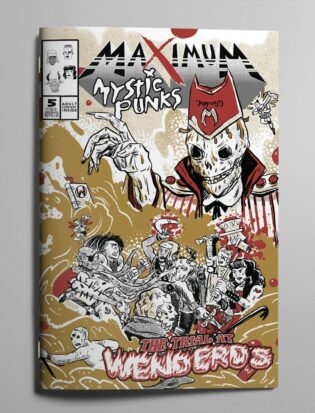
Foes stalk the punks’ trek over hallowed burial ground, described in excruciating detail with horrific visages and vicious abilities that promise gory consequences should the dice fail to roll in a player’s favor. Sally Cantirino drew the cover art for Wenderd’s and has returned to illustrate the one for Crypt, highlighting much of this grotesqueness. This also demonstrates her artistic flexibility as it shifts away from her work in the more fantastical and surreal Vorpal Almanac. And yet her skeletal “Mournshard” illustration in Vorpal Almanac feels closer, like a cousin to Crypt – it could’ve possibly even been a point of reference for the Mystic Punks adventure (or vice versa), if the development timelines for both games intersect for that speculated connection.
Tony himself had studied drawing and painting in college before immersing himself in DIY comics culture. Hailing from Ohio in the Rust Belt, he shares that growing up in the pre-internet age of the ’80s and ’90s limited his exposure to several things – with some exceptions. “There always seemed to be an abundance of weird RPGs, comics, and scary paperback novels to browse through at my local mall’s Waldenbooks.”
He drifted more from drawing and delved further into writing, focusing on the roleplaying community and making Mystic Punks available for the first time on Google+ boards for any interested players. Tony sent a copy to his friend and future co-creator Jay Domingo, or Dark Guide Jay.
“When Tony sent me the solo RPG, I was so into his game and his aesthetic that I nagged him about a group version of the game and wouldn’t let up,” Jay shares.
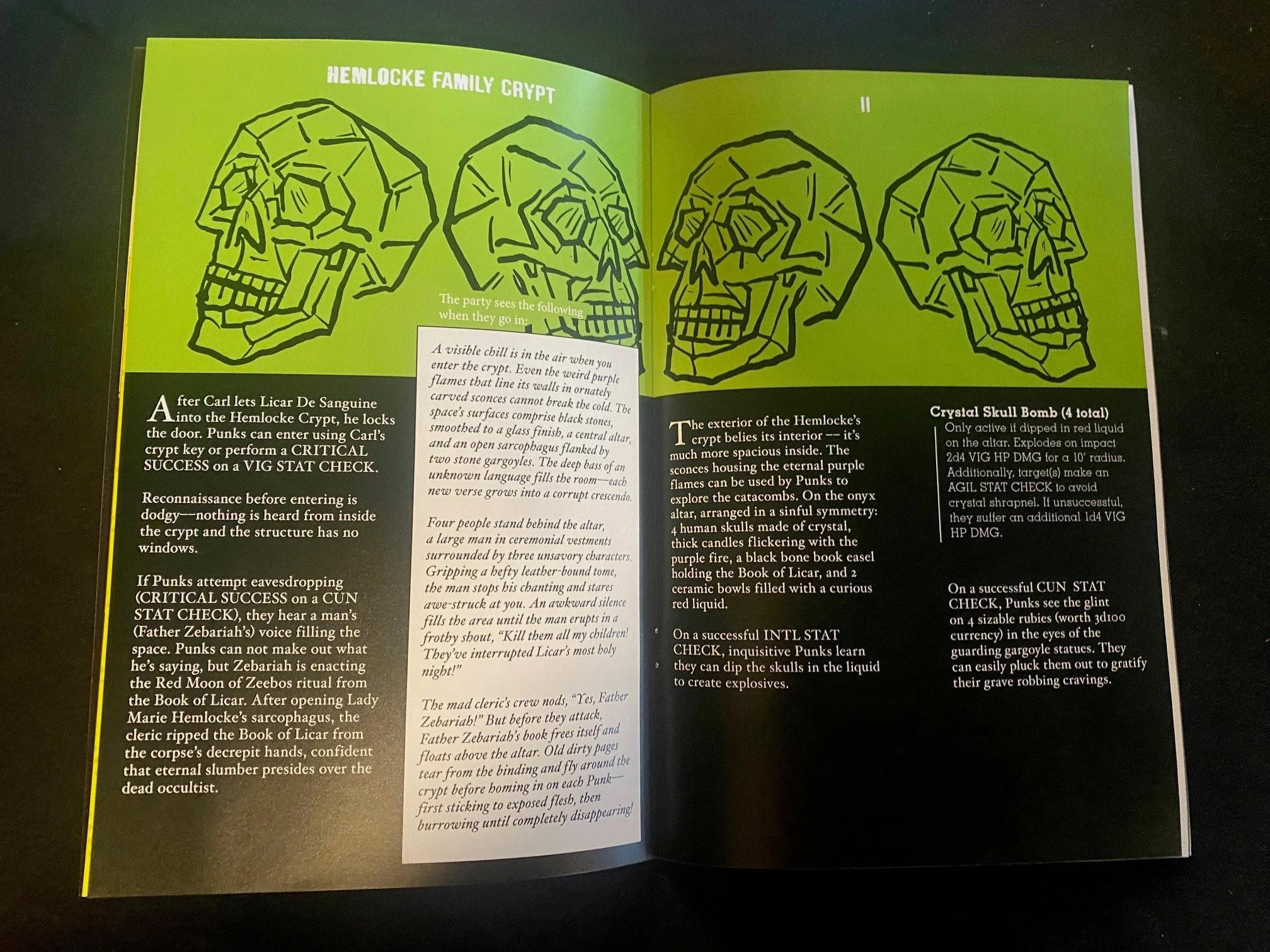
With his encouragement to turn Mystic Punks into a multiplayer TTRPG, the two embarked on both a new design change and a new creative partnership.
“Led by Jay, it was a total overhaul in mechanics from solo to group play, except for lore. We wanted to keep the tones I established in the zines to carry over around a table,” Tony shares. “The current iteration of Mystic Punks wouldn’t be possible without Jay’s gaming acumen and adept mechanics.”
“I wrote the North City Park zine that was more of a board game and I tested it with several groups. That adventure eventually evolved into Crackdown at IV Park that is included in the Quickstart Rules,” Jay explains. “One of the main changes that I made was expanding the Soulbound switchblade into a blank canvas. I think that opened the game up to players being more expressive with their characters and led the creative direction of the group rules.”
When it came to developing Crypt specifically, Tony explains that they stayed with the same process used in Wenderd’s, with him first writing the story and drawing a preliminary map. Then Jay reviewed Crypt, focusing on gameplay and checking for any major errors. After that, the game passed to editing and layout. “From there, it becomes much more organic, going back and forth between us and Exalted Funeral to produce a final product,” Tony adds.
As for inspiration in earlier stages of development, Tony shares that early Castlevania games, ’70s and ’80s Cronenberg films and Paul Gulacy’s The Thing from Another World comic run influenced Crypt. And when asked what a soundtrack for Mystic Punks would be like, Tony shared a track list for a hypothetical Crypt mixtape that included the likes of Troller’s “Tiger,” El Destello’s “Nuevo Centro de Represión” and Trampoline Team’s “Come Here Alone.”
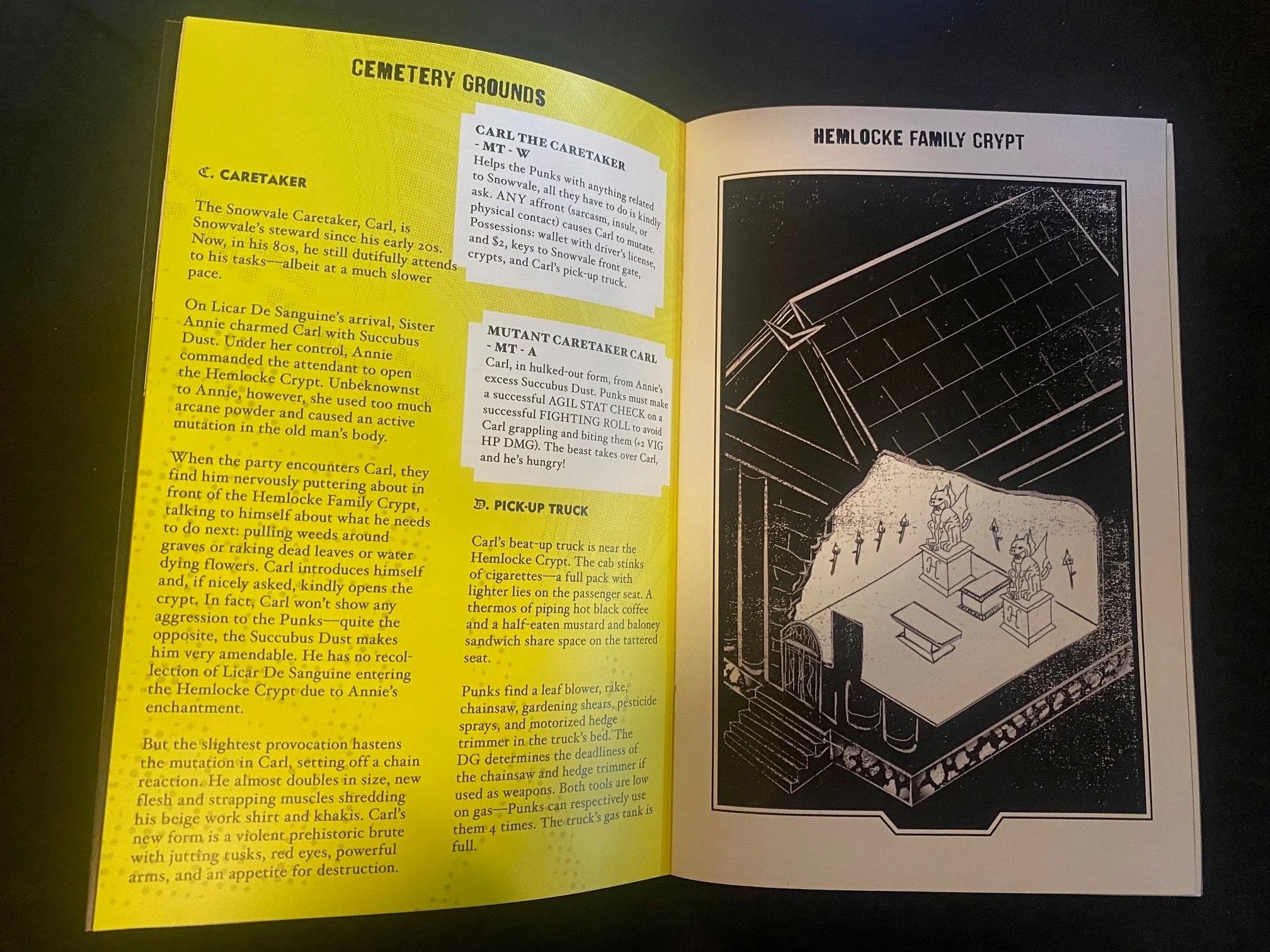
Another source of inspiration for Crypt can be found within ’70s horror films on cults – and with several deranged and mutated cultists running amok in the game, these movies likely provided the most influence. But how did Tony approach adapting that film experience and subgenre into a TTRPG?
“I find that cinema can translate easily into RPG writing, depending on the visual nature of the content. So, I approached Crypt by digging into my interests in ‘family’ cults like The Source Family and Ti West’s The House of the Devil (I know this is from 2009, but has its roots in the ’70s!). Amando de Ossorio’s Tombs of the Blind Dead, Alfonso Corona Blake’s Santo vs. las Mujeres Vampiro, and Rubén Galindo’s and Jaime Jiménez Pons’s Santo vs. Las Lobas lend gothic style choices to mood, tone, and a bit of camp.”
Players can find backup against murderous cultists with Flang, an NPC and optional party member. This character was initially conceived because Tony wanted to expand on the lore of some magic first introduced in the Mystic Punks zines, Nitar’s Fireballs spell. This led to the Troll Disciples of Nitar, which include Flang as a member. “Moreso, I wanted to show the line between a potential ally and an enemy is thin,” Tony says. “That’s where Flang Jangjabar comes in, a possible Punk party member with a different agenda than his makeshift comrades. Flang is really fun for a Dark Guide to play, especially with his dark backstory!”
Flang can be seen as an example of where game text, players and Dark Guides intersect and inform each other. Tony considers the balance between writing content for a TTRPG and leaving space for player freedom.
“I’m guilty of sometimes adding so much flavor to a game, like its location or rooms, that – for better or worse – it becomes a bit of a railroad. However, I run Mystic Punks games with the player in the forefront,” Tony says. “I’m all about Punks wanting to deviate from the main quest to do something not in an adventure. That adaptability between gamemasters and players is where the magic exists in roleplaying.”
* * *
Get Crypt and other fine Mystic Punks products at Exalted Funeral!
* * *
Crypt Mixtape from Dark Guide Tony
- ᐊᐳᑦ – ᐸᓇ (Heimat der Katastrophe, 2017)
- Troller – Tiger (Holodeck, 2012)
- Melvins – It’s Shoved (Boner, 1991) (Acoustic because that’s what’s on Bandcamp)
- MjolniirDXP – The WFMU Aktion – Recorded live at WFMU Studios 8/10/2010 for Wm. Berger’s My Castle of Quiet program
- Trampoline Team – Come Here Alone (2019)
- The Jesus Lizard – The Art of Self-Defense (Touch and Go 1992)
- GAS – Königsforst 5 (Mille Plateaux 1998)
- El Destello – Nuevo Centro de Represión (2021)
- Buck Biloxi and the Fucks – Rock And Roll Sucks Part 2 (2015)
———
Alyssa Wejebe is a writer and editor specializing in the wide world of arts and entertainment. She has worked in pop culture journalism and in the localization of Japanese light novels. You can find her on Twitter @alyssawejebe.




